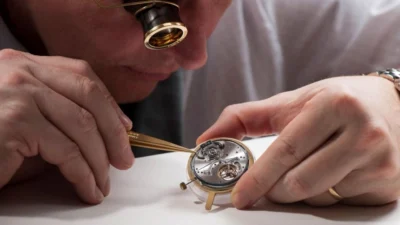PASUNDAN EKSPRES – Evolution of Watches, Watches have been an integral part of human civilization for centuries.
From their humble beginnings as simple timekeeping devices to today’s sophisticated smartwatches, they have evolved significantly.
This article delves into the fascinating history of watches, tracing their journey from ancient sundials to modern wearable technology.
Evolution of Watches in the world
1. Ancient Timekeeping
The concept of measuring time dates back to ancient civilizations.
Baca Juga:Modifikasi Yamaha MX King Transformasi Mesin Balap dengan Body yang RampingNokia Lumia Max 2023 Meluncurkan Performa Terbaik dengan Snapdragon 8 Gen 2
The earliest timekeeping devices included sundials and water clocks, which relied on natural elements to track time.
These early timepieces laid the foundation for more accurate and portable timekeeping devices.
2. The Mechanical Revolution
In the 14th century, mechanical clocks emerged in Europe.
These early clocks were large and found in public places like churches and town squares.
Miniaturization led to the development of pocket watches in the 16th century, making timekeeping more personal and portable.
3. The Birth of Wristwatches
Evolution of Watches, as we know them today, were initially designed for military use during the late 19th century.
Soldiers found them more practical than pocket watches for coordinating maneuvers.
These early wristwatches were rudimentary but set the stage for the wristwatch’s popularity in the 20th century.
4. The Swiss Watchmaking Tradition
Baca Juga:Manfaat Kentut untuk Kesehatan Setiap Hari Manfaat Mengkonsumsi Buah Naga Setiap Hari, Baik untuk Menurunkan Kolestrol
Switzerland became synonymous with precision watchmaking in the 19th and 20th centuries.
Swiss watchmakers like Rolex and Patek Philippe crafted high-quality timepieces that gained worldwide acclaim for their accuracy and craftsmanship.
read : Model Jam Tangan Wanita yang Lagi Trend 2023, Ciptakan Dunia Fashionmu dengan Jam Tangan Mewah ini
5. The Quartz Revolution
The 20th century brought the quartz revolution, which replaced traditional mechanical movements with quartz crystal technology.
Quartz watches were cheaper, more accurate, and required less maintenance, leading to their widespread adoption.
6. Digital Watches and Smartwatches
The 1970s saw the rise of digital watches with LED displays, followed by LCD displays.
